Posté par Sébastien Bontemps, le 26 février 2016;
- Date limite : 29 avril 2016
- Date et lieu : 11-12 octobre 2016, Lisbonne
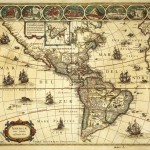 Copies of Paintings in Portugal, Spain and the New World Lisbon, Fundação Gulbenkian, October 11 – 12, 2016 Deadline: Apr 29, 2016 Copies of Paintings in Portugal, Spain and the New World, 1552-1752. International Congress, Lisbon, Fundação Gulbenkian, October 11-12, 2016. For the Portuguese and Spanish versions, please scroll down. Organising Committee/ Comissão organizadora/ Comité organizador: Pedro Flor (Universidade Aberta de Lisboa), Susana Varela Flor (Universidade Nova de Lisboa), Luisa Elena Alcalá (Universidad Autónoma de Madrid), David García Cueto (Universidad de Granada) and Carla Mazzarelli (Università della Svizzera italiana).Sponsored by the Instituto de História da Arte, Faculdade de Ciências Sociais e Humanas da Universidade Nova de Lisboa, the Spanish National Research Project COPIMONARCH (I+D HAR2014-52061-P) at the Universidad de Granada, and . . . → En lire plus Copies of Paintings in Portugal, Spain and the New World Lisbon, Fundação Gulbenkian, October 11 – 12, 2016 Deadline: Apr 29, 2016 Copies of Paintings in Portugal, Spain and the New World, 1552-1752. International Congress, Lisbon, Fundação Gulbenkian, October 11-12, 2016. For the Portuguese and Spanish versions, please scroll down. Organising Committee/ Comissão organizadora/ Comité organizador: Pedro Flor (Universidade Aberta de Lisboa), Susana Varela Flor (Universidade Nova de Lisboa), Luisa Elena Alcalá (Universidad Autónoma de Madrid), David García Cueto (Universidad de Granada) and Carla Mazzarelli (Università della Svizzera italiana).Sponsored by the Instituto de História da Arte, Faculdade de Ciências Sociais e Humanas da Universidade Nova de Lisboa, the Spanish National Research Project COPIMONARCH (I+D HAR2014-52061-P) at the Universidad de Granada, and . . . → En lire plus
Posté par Sébastien Bontemps, le 26 février 2016;
- Date limite : 30 avril 2016
- Date et lieu : 15 septembre 2016, Bologne
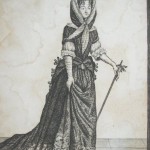 The Economy of Dress and Textiles (Bologna, 15 Sep 16) University of Bologna, Dipartimento di Storia Culture e Civiltà, San Giovanni in Monte, Bologna, Italy, September 15, 2016 The Economy of Dress and Textiles: Avenues of Trade, Production and Consumption in the Early Modern Period The cloth and textile market is of central importance to the late medieval and early modern economy. Trade routes, centres of production and patterns of consumption were determining factors that stimulated the influx of luxury cloth and textiles into established fashion and textile markets, while second-hand garments developed their own trajectory. Being sold at auctions and dealer shops, they sometimes enjoyed a second life and were often refashioned. The entire cost related to the fashioning of . . . → En lire plus The Economy of Dress and Textiles (Bologna, 15 Sep 16) University of Bologna, Dipartimento di Storia Culture e Civiltà, San Giovanni in Monte, Bologna, Italy, September 15, 2016 The Economy of Dress and Textiles: Avenues of Trade, Production and Consumption in the Early Modern Period The cloth and textile market is of central importance to the late medieval and early modern economy. Trade routes, centres of production and patterns of consumption were determining factors that stimulated the influx of luxury cloth and textiles into established fashion and textile markets, while second-hand garments developed their own trajectory. Being sold at auctions and dealer shops, they sometimes enjoyed a second life and were often refashioned. The entire cost related to the fashioning of . . . → En lire plus
Posté par Pascale Dubus, le 21 février 2016;
- Date limite : 1er mars 2016
- Date et lieu de la journée d'études : 9 juin 2016, Amsterdam, Rijksmuseum
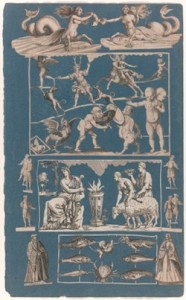 The scholarly research on early modern printmaking has evolved from a focus on the Romantic concept of the Peintre-Graveur to studies of artists and printmakers in their specific cultural and socioeconomic context. In addition, the idea that publishers played a vital role in artistic, commercial, and organisational aspects of printmaking is now widely accepted. Both art-historical and art-technical research on these matters have resulted in reference works and exhibition catalogues of high standard. In these studies, however, the position of the consumer has often been ignored or dealt with only briefly. In addition, print collections in the past have often failed to recognise the importance of contemporary adaptations, signs of . . . → En lire plus The scholarly research on early modern printmaking has evolved from a focus on the Romantic concept of the Peintre-Graveur to studies of artists and printmakers in their specific cultural and socioeconomic context. In addition, the idea that publishers played a vital role in artistic, commercial, and organisational aspects of printmaking is now widely accepted. Both art-historical and art-technical research on these matters have resulted in reference works and exhibition catalogues of high standard. In these studies, however, the position of the consumer has often been ignored or dealt with only briefly. In addition, print collections in the past have often failed to recognise the importance of contemporary adaptations, signs of . . . → En lire plus
Posté par Pascale Dubus, le 11 février 2016;
- Date limite : 10 mars 2016
- Date de prise de fonction : Mai-juillet 2016
 Prof. Dr. Victor I. Stoichita, Université de Fribourg, will hold the newly established Panofsky-Professorship at the Zentralinstitut für Kunstgeschichte Munich in May-June 2016. Prof. Dr. Victor I. Stoichita, Université de Fribourg, will hold the newly established Panofsky-Professorship at the Zentralinstitut für Kunstgeschichte Munich in May-June 2016.
In connection with this professorship the Zentralinstitut für Kunstgeschichte seeks applications for a Panofsky-Fellowship. The fellowship is intended for doctoral students and postdoctoral scholars (who have graduated within the last five years) who are working on a project related to Renaissance art. Fellows are expected to maintain a presence at the ZI, to present the Fellowship project, and to partake in the activities of the ZI and the Institut für Kunstgeschichte of the LMU. The fellowship lasts three months and commences in May 2015. Graduate fellows . . . → En lire plus
Posté par Pascale Dubus, le 10 février 2016;
- Date limite : 15 avril 2016
- Date et lieu des journées d'études : 22–24 août 2016, Los Angeles, Getty Center
 The UCLA Center for Medieval and Renaissance Studies (CMRS) invites applications from graduate students and post-doctoral scholars to attend the Dante and the Visual Arts Summer Symposium. The symposium, organized by CMRS and the journal Dante e l’Arte in conjunction with the J. Paul Getty Museum, will take place August 22–24, 2016 in Los Angeles with sessions at UCLA and at the Getty Center. The symposium is part of the larger research project Envisioning the Word: Dante and the Visual Arts 1300-1500 which is an ongoing collaboration between the UCLA Center for Medieval and Renaissance Studies and the Institut d’Estudis Medievals at the Universitat . . . → En lire plus The UCLA Center for Medieval and Renaissance Studies (CMRS) invites applications from graduate students and post-doctoral scholars to attend the Dante and the Visual Arts Summer Symposium. The symposium, organized by CMRS and the journal Dante e l’Arte in conjunction with the J. Paul Getty Museum, will take place August 22–24, 2016 in Los Angeles with sessions at UCLA and at the Getty Center. The symposium is part of the larger research project Envisioning the Word: Dante and the Visual Arts 1300-1500 which is an ongoing collaboration between the UCLA Center for Medieval and Renaissance Studies and the Institut d’Estudis Medievals at the Universitat . . . → En lire plus
Posté par Sébastien Bontemps, le 27 janvier 2016;
- Date limite : 1er mars 2016
 Netherlands Yearbook for History of Art, Vol. 67 : Netherlandish Sculpture of the 16th Century Netherlands Yearbook for History of Art, Vol. 67 : Netherlandish Sculpture of the 16th Century
Sculpture was one of the principal arts in the Low Countries during the 16th century, an important vehicle for supporting the interests of the nobility and the church in particular. The period saw the transition from a ‘Gothic’ to an ‘antique’ artistic mode, a transformation in which sculpture assumed a leading role. Throughout the century, Netherlandish sculpture was a prestigious and favored export product—from carved oak altarpieces to alabaster reliefs, brass epitaphs, and huisaltaren – while at the same time many sculptors from the Low Countries travelled extensively through Europe.
Until quite recently, surveys of early modern art in Northern Europe rarely included much sculpture. Only . . . → En lire plus
Posté par Pascale Dubus, le 23 janvier 2016;
- Date limite : 1er février 2016
- Date et lieu du colloque : 18–20 août 2016, Bruges, Sixteenth Century Society Conference
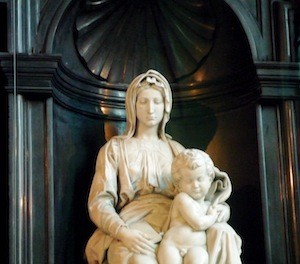 According to Holanda in his Dialogues, Michelangelo claimed that Northern, and specifically Flemish art, « will please the devout better than any painting in Italy…It will appeal to women, especially to the very old and the very young, and also to monks and nuns and to certain noblemen who have no sense of true harmony.” Perhaps as a consequence, few artists are more closely associated with Italy than Michelangelo. This session seeks to question this notion, calling for papers to broaden the conversation by considering the influence, interactions, and legacy of Michelangelo and his art on Northern Europe during the Early Modern period. According to Holanda in his Dialogues, Michelangelo claimed that Northern, and specifically Flemish art, « will please the devout better than any painting in Italy…It will appeal to women, especially to the very old and the very young, and also to monks and nuns and to certain noblemen who have no sense of true harmony.” Perhaps as a consequence, few artists are more closely associated with Italy than Michelangelo. This session seeks to question this notion, calling for papers to broaden the conversation by considering the influence, interactions, and legacy of Michelangelo and his art on Northern Europe during the Early Modern period.
. . . → En lire plus
Posté par Pierre-Olivier Védrine, le 23 janvier 2016;
- Date limite : 31 mars 2016
- Date et lieu de la journée d'étude : 17-18 novembre 2016, Florence, Kunsthistorisches Institut in Florenz
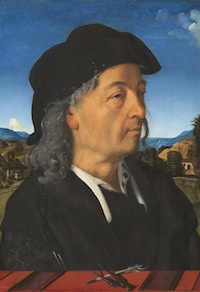 Le cinq centième anniversaire de la mort de Giuliano da Sangallo en 2016 offre l’occasion de dresser un bilan de la fortune historiographique discontinue de cet artiste, de grande envergure mais difficile à saisir sur la scène majeure de l’histoire de l’architecture, dont il est resté une figure marginale. Souvent décrit comme oscillant entre deux époques et deux styles, avec un catalogue qui reste toujours à compléter et à homogénéiser, son œuvre n’a fait que récemment l’objet d’une étude monographique de référence (Sabine Frommel, 2014) qui invite à poursuivre la recherche des aspects moins étudiés de sa production. Le cinq centième anniversaire de la mort de Giuliano da Sangallo en 2016 offre l’occasion de dresser un bilan de la fortune historiographique discontinue de cet artiste, de grande envergure mais difficile à saisir sur la scène majeure de l’histoire de l’architecture, dont il est resté une figure marginale. Souvent décrit comme oscillant entre deux époques et deux styles, avec un catalogue qui reste toujours à compléter et à homogénéiser, son œuvre n’a fait que récemment l’objet d’une étude monographique de référence (Sabine Frommel, 2014) qui invite à poursuivre la recherche des aspects moins étudiés de sa production.
Sa formation de legnaiolo (menuisier), . . . → En lire plus
Posté par Pascale Dubus, le 22 janvier 2016;
- Date et lieu du séminaire : 22 janvier 2016, Paris, INHA
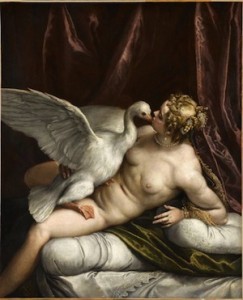 La quatrième séance du séminaire collectif d’histoire de l’art de la Renaissance se tiendra le vendredi 22 janvier de 18h à 20h à l’INHA en salle Giorgio Vasari. La quatrième séance du séminaire collectif d’histoire de l’art de la Renaissance se tiendra le vendredi 22 janvier de 18h à 20h à l’INHA en salle Giorgio Vasari.
Lise Wajeman, maître de conférences à l’Université d’Aix-en-Provence, interviendra sur le thème suivant : L’amour de l’art. Érotique de l’artiste et du spectateur au XVIe siècle. « L’amour de l’art » à la Renaissance, loin de concerner les seuls traités d’arts, intéresse aussi la théologie, la médecine ou les fictions, qui l’abordent souvent de façon concrète, comme une circulation désirante entre l’artiste, l’image et le spectateur. L’art qui s’invente au XVIe siècle vise à atteindre le spectateur, dans . . . → En lire plus
Posté par Ludovic Jouvet, le 21 janvier 2016;
Lizzie Boubli, Le dessin en Espagne à la Renaissance : pour un interprétation de la trace, Turnhout : Brepols, 2015
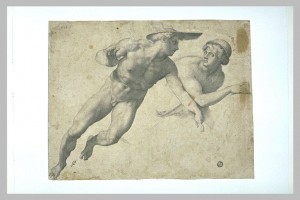 21 x 27 cm 21 x 27 cm
653 pages
97 illustrations couleur et N&B
ISBN: 978-2-503-55322-1
Prix : 100 €
Le thème principal de cet ouvrage est double : une synthèse de nos connaissances sur la situation actuelle du dessin de la Renaissance en Espagne et l’émergence d’un statut spécifique du dessin dans la péninsule à partir des années 1560 et surtout, avec de plus en plus d’évidence à partir des années 1580. Une des difficultés principales repose sur . . . → En lire plus
Posté par Pascale Dubus, le 19 janvier 2016;
- Date limite : 17 mars 2016
- Date et lieu du colloque : 28-29 septembre 2016, Oslo, The Norwegian Academy of Science and Letters
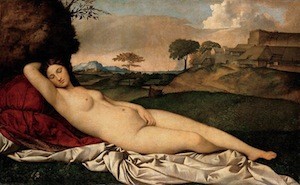 The conference Renaissance Prototypes will focus on that particular early modern notion of the past as composed of predictions of the future. “Prototype” was a term coined in the Renaissance to sanction the recycling of historical objects and concepts. It conveyed the idea that the true fulfillment of a trope, a motif, an image or a building would always lie in the future. With venerated ancient models thus “reduced” to a mere sketch or an outline, linear time appears to go in loops and conventional chronologies run backwards. The past is recast as a trial run for the present. The conference Renaissance Prototypes will focus on that particular early modern notion of the past as composed of predictions of the future. “Prototype” was a term coined in the Renaissance to sanction the recycling of historical objects and concepts. It conveyed the idea that the true fulfillment of a trope, a motif, an image or a building would always lie in the future. With venerated ancient models thus “reduced” to a mere sketch or an outline, linear time appears to go in loops and conventional chronologies run backwards. The past is recast as a trial run for the present.
We invite contributors to reflect on the cross-temporal scheme entailed . . . → En lire plus
Posté par Sébastien Bontemps, le 15 janvier 2016;
- Date limite : 1er avril 2016
- Date et lieu : 11 janvier 2017, Université de Louvain
 Imaging Utopia (Leuven, 11 Jan 17) Illuminare – Centre for the Study of Medieval Art (University of Leuven), Belgium, January 11, 2017 Deadline: Apr 1, 2016 XXth symposium for the Study of Underdrawing and Technology in Painting Imaging Utopia: New Perspectives on Northern Renaissance Art Illuminare – Centre for the Study of Medieval Art (University of Leuven), Belgium, 11-13 January 2017 The twentieth symposium for the Study of Underdrawing and Technology in Painting will be held in Leuven in the context of the major exhibition In Search of Utopia. In 1516, Thomas More (1478- 1535), humanist, statesman and ambassador of Henry VIII of England, published his book Utopia at the renowned printing house established by Dirk Martens in the university . . . → En lire plus Imaging Utopia (Leuven, 11 Jan 17) Illuminare – Centre for the Study of Medieval Art (University of Leuven), Belgium, January 11, 2017 Deadline: Apr 1, 2016 XXth symposium for the Study of Underdrawing and Technology in Painting Imaging Utopia: New Perspectives on Northern Renaissance Art Illuminare – Centre for the Study of Medieval Art (University of Leuven), Belgium, 11-13 January 2017 The twentieth symposium for the Study of Underdrawing and Technology in Painting will be held in Leuven in the context of the major exhibition In Search of Utopia. In 1516, Thomas More (1478- 1535), humanist, statesman and ambassador of Henry VIII of England, published his book Utopia at the renowned printing house established by Dirk Martens in the university . . . → En lire plus
Posté par Olivier Bonfait, le 14 janvier 2016;
- Auteur : Thomas Golsenne, Thomas Golsenne
Bonjour,
 après des années de recherche et de déconvenues éditoriales, mon livre, Carlo Crivelli et le matérialisme mystique du Quattrocento, va enfin paraître, aux Presses Universitaires de Rennes, dans deux ou trois mois. Ce sera le premier livre en français sur ce grand artiste méconnu de la Renaissance. Mais tous les problèmes ne sont pas encore résolus. Malgré une subvention que j’ai obtenue, mon éditeur, à court d’argent, demande encore un complément de financement de l’ordre de 1500 euros.
J’ai lancé un appel à financement participatif en ligne que vous pourrez trouver . . . → En lire plus
Posté par Sébastien Bontemps, le 12 janvier 2016;
- Date limite : 1er mars 2016
- Date et lieu : 3-5 novembre, Université de Rennes
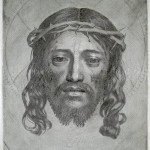 L`image miraculeuse dans le monde chrétien (Rennes, 3-5 Nov 16) Université Rennes 2, Rennes, France, November 3 – 05, 2016 Consacré aux images miraculeuses et à leur culte dans le christianisme occidental (XIVe-XVIIe siècles), le colloque a pour but d’envisager tous les aspects d’un phénomène majeur, qui a eu des répercussions dans la plupart des domaines de la vie religieuse, depuis la réflexion théologique jusqu’aux pratiques des pèlerins en passant par les dévotions privées ou encore l’aménagement des lieux de culte. En conjuguant questionnements et perspectives disciplinaires variés, la rencontre entend à la fois faire le bilan des recherches menées dans ce domaine et contribuer à leur renouvellement. Le colloque se tiendra à l’Université Rennes 2 les 3-4-5 novembre 2016. . . . → En lire plus L`image miraculeuse dans le monde chrétien (Rennes, 3-5 Nov 16) Université Rennes 2, Rennes, France, November 3 – 05, 2016 Consacré aux images miraculeuses et à leur culte dans le christianisme occidental (XIVe-XVIIe siècles), le colloque a pour but d’envisager tous les aspects d’un phénomène majeur, qui a eu des répercussions dans la plupart des domaines de la vie religieuse, depuis la réflexion théologique jusqu’aux pratiques des pèlerins en passant par les dévotions privées ou encore l’aménagement des lieux de culte. En conjuguant questionnements et perspectives disciplinaires variés, la rencontre entend à la fois faire le bilan des recherches menées dans ce domaine et contribuer à leur renouvellement. Le colloque se tiendra à l’Université Rennes 2 les 3-4-5 novembre 2016. . . . → En lire plus
Posté par Pascale Dubus, le 15 décembre 2015;
- Date et lieu du séminaire : 18 décembre 2015, Paris, INHA
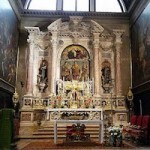 La troisième séance du séminaire collectif d’histoire de l’art de la Renaissance se tiendra le vendredi 18 décembre de 18h à 20h à l’INHA en salle Giorgio Vasari. La troisième séance du séminaire collectif d’histoire de l’art de la Renaissance se tiendra le vendredi 18 décembre de 18h à 20h à l’INHA en salle Giorgio Vasari.
Valentina Sapienza, maître de conférences à l’Université de Lille, interviendra sur le thème suivant:
Le chantier de l’église de San Zulian à Venise durant le XVIe siècle. De la peinture “provisoire” à la peinture invisible.
Le séminaire est organisé par le Centre d’Etudes Supérieures de la Renaissance (Université de Tours), le Centre d’Histoire et de Théorie des Arts (EHESS), l’Ecole Pratique des hautes Etudes et le Centre d’Histoire de l’Art de la Renaissance (Université Paris 1 Panthéon Sorbonne).
Programme annuel du . . . → En lire plus
Posté par Pascale Dubus, le 12 décembre 2015;
- Date et lieu du colloque : 25-26 février 2016, Bruxelles, IRPA
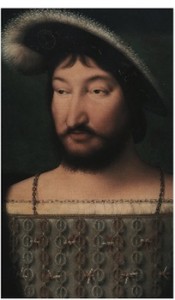
Prolongeant les événements, commémorations et activités scientifiques qui célèbreront, en 2015, le 500e anniversaire de l’avènement de François Ier (1er janvier 1515) et celui de la victoire de Marignan (13 et 14 septembre 1515), la rencontre entend privilégier les liens entre le « grand roy Françoys » et le Nord. En effet, si les échanges entre François Ier et l’Italie demeurent un sujet d’études particulièrement fécond, les relations que le roi a établies avec le Nord, spécialement avec les anciens Pays-Bas méridionaux, sont tout aussi riches et complexes. Pourtant, ces rapports n’ont pas encore donné lieu à une enquête d’envergure. Le colloque « François Ier et les . . . → En lire plus
Posté par Sébastien Bontemps, le 10 décembre 2015;
- Date limite : 1er février 2016
- Date et lieu : Bruges, 18-20 août 2016
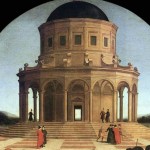 Sacred Spaces, Secular Acts (Bruges, 18 – 20 Aug 16) Bruges, August 18 – 20, 2016 Deadline: Feb 1, 2016 Sacred Spaces, Secular Acts (Bruges, 18 – 20 Aug 16) Bruges, August 18 – 20, 2016 Deadline: Feb 1, 2016
CFP Sixteenth-Century Society Conference, Bruges (August 18-20, 2016) Panel: Sacred Spaces, Secular Acts: Non-Religious Functions of Italian Church Buildings The Italian church interior in the early modern period witnessed far more than mere religious rite. As a venue for courtship rituals, dances, theatrical performances, political meetings, legal business and even sexual encounters, churches were versatile, multi-functional spaces which could change their purpose and ambience in response to distinct activities. Conservative ecclesiastics such as Archbishop Antoninus of Florence, San Bernardino da Siena and Fra Savonarola condemned such acts, indirectly confirming their widespread practice. Further evidence is provided by notarial documentation, which . . . → En lire plus
Posté par Pascale Dubus, le 8 décembre 2015;
- Date limite : 29 février 2016
- Date et lieu des rencontres : 16-18 juin 2016, Vincenza, Centro Internazionale di Studi di Architettura Andrea Palladio
 Le Centro Internazionale di Studi di Architettura Andrea Palladio organise un séminaire international consacré à Palladio e la Roma di Antonio da Sangallo il giovane qui se tiendra du 16 au 18 juin 2016 à Vincenza. Le Centro Internazionale di Studi di Architettura Andrea Palladio organise un séminaire international consacré à Palladio e la Roma di Antonio da Sangallo il giovane qui se tiendra du 16 au 18 juin 2016 à Vincenza.
Da la mort de Raphaël en 1520 à sa propre disparition en 1546, Antonio da Sangallo le Jeune domine la scène architecturale romaine, pour ensuite laisser place à la suprématie de Michel-Ange. Pour le jeune Palladio, qui accomplit ses trois premiers voyages à Rome entre l’automne 1541 et juillet 1547, les architectures d’Antonio sont une référence incontournable comme source d’imitation ou de rejet. Il . . . → En lire plus
Posté par Pascale Dubus, le 7 décembre 2015;
- Date limite : 8 février 2016
- Date et lieu du colloque : 18-20 août 2016, Bruges, SCSC
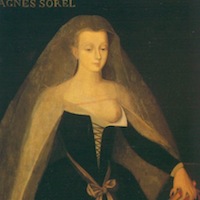 Session du congrès de la Sixteenth Century Society and Conference (SCSC), 18-20 août 2016 à Bruges (Belgique) Session du congrès de la Sixteenth Century Society and Conference (SCSC), 18-20 août 2016 à Bruges (Belgique)
This session will explore the social implications of intimacy in the production, reception, and circulation of early modern art. Among the questions that could be addressed are:
How did artists deploy particular media or exploit the material qualities of their works to craft advantageous intimacies with their desired constituents? To what ends did patrons ask artists to portray socially intimate relationships? In what ways did the display or circulation of works help to shape intimacy, whether through forging or fissuring bonds? Could depicted gestures . . . → En lire plus
Posté par Pascale Dubus, le 5 décembre 2015;
- Date limite : 1er février 2016
- Date et lieu de la journée d'études : 27 mai 2016, Coventry, University of Warwick
 The aim of the colloquium is to explore the significance of the concepts of fate and fortune in Renaissance philosophy. While having a significant medieval background in theological texts and in The Consolation of Philosophy and other philosophical treatises, these concepts received new interpretations during the Renaissance period. The cause was a renewed interest in Cicero’s treatises, as well as in Alexander of Aphrodisias and Stoic philosophy. On the other hand, the question of fate and fortune seems to be closely related to religious disputes of the sixteenth century. Hopefully, the colloquium will contribute to a better understanding . . . → En lire plus The aim of the colloquium is to explore the significance of the concepts of fate and fortune in Renaissance philosophy. While having a significant medieval background in theological texts and in The Consolation of Philosophy and other philosophical treatises, these concepts received new interpretations during the Renaissance period. The cause was a renewed interest in Cicero’s treatises, as well as in Alexander of Aphrodisias and Stoic philosophy. On the other hand, the question of fate and fortune seems to be closely related to religious disputes of the sixteenth century. Hopefully, the colloquium will contribute to a better understanding . . . → En lire plus
|
Équipe Rédacteur en chef : Olivier Bonfait.
Rédacteurs : Elliot Adam (Moyen Age) ; Nicolas Ballet (XX-XXIe siècles) ; Matthieu Fantoni (musées) ; Antonella Fenech Kroke (bourses) ; Vladimir Nestorov (Lettre mensuelle)
Administrateur web : Matthieu Lett.
ancien éditeur : Pascale Dubus
anciens rédacteurs : Gautier Anceau, Sébastien Bontemps, Damien Bril ; Sébastien Chauffour ; Ludovic Jouvet ; Aude Prigot
|
 Copies of Paintings in Portugal, Spain and the New World Lisbon, Fundação Gulbenkian, October 11 – 12, 2016 Deadline: Apr 29, 2016 Copies of Paintings in Portugal, Spain and the New World, 1552-1752. International Congress, Lisbon, Fundação Gulbenkian, October 11-12, 2016. For the Portuguese and Spanish versions, please scroll down. Organising Committee/ Comissão organizadora/ Comité organizador: Pedro Flor (Universidade Aberta de Lisboa), Susana Varela Flor (Universidade Nova de Lisboa), Luisa Elena Alcalá (Universidad Autónoma de Madrid), David García Cueto (Universidad de Granada) and Carla Mazzarelli (Università della Svizzera italiana).Sponsored by the Instituto de História da Arte, Faculdade de Ciências Sociais e Humanas da Universidade Nova de Lisboa, the Spanish National Research Project COPIMONARCH (I+D HAR2014-52061-P) at the Universidad de Granada, and . . . → En lire plus
Copies of Paintings in Portugal, Spain and the New World Lisbon, Fundação Gulbenkian, October 11 – 12, 2016 Deadline: Apr 29, 2016 Copies of Paintings in Portugal, Spain and the New World, 1552-1752. International Congress, Lisbon, Fundação Gulbenkian, October 11-12, 2016. For the Portuguese and Spanish versions, please scroll down. Organising Committee/ Comissão organizadora/ Comité organizador: Pedro Flor (Universidade Aberta de Lisboa), Susana Varela Flor (Universidade Nova de Lisboa), Luisa Elena Alcalá (Universidad Autónoma de Madrid), David García Cueto (Universidad de Granada) and Carla Mazzarelli (Università della Svizzera italiana).Sponsored by the Instituto de História da Arte, Faculdade de Ciências Sociais e Humanas da Universidade Nova de Lisboa, the Spanish National Research Project COPIMONARCH (I+D HAR2014-52061-P) at the Universidad de Granada, and . . . → En lire plus après des années de recherche et de déconvenues éditoriales, mon livre, Carlo Crivelli et le matérialisme mystique du Quattrocento, va enfin paraître, aux Presses Universitaires de Rennes, dans deux ou trois mois. Ce sera le premier livre en français sur ce grand artiste méconnu de la Renaissance.
après des années de recherche et de déconvenues éditoriales, mon livre, Carlo Crivelli et le matérialisme mystique du Quattrocento, va enfin paraître, aux Presses Universitaires de Rennes, dans deux ou trois mois. Ce sera le premier livre en français sur ce grand artiste méconnu de la Renaissance.

















